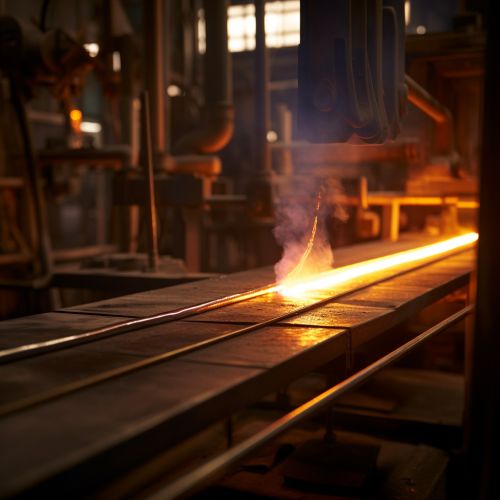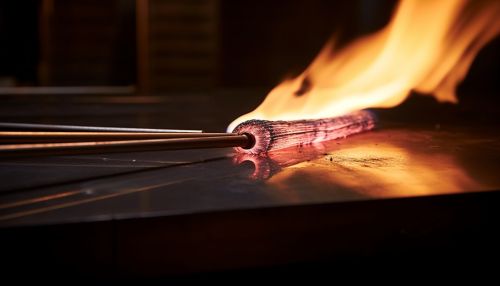Heat Transfer
Introduction
Heat transfer is a discipline of thermal engineering that concerns the generation, use, conversion, and exchange of thermal energy and heat between physical systems. Heat transfer is classified into various mechanisms, such as thermal conduction, thermal convection, thermal radiation, and transfer of energy by phase changes.
Mechanisms of Heat Transfer
Heat transfer mechanisms are generally categorized into three types: conduction, convection, and radiation.
Conduction


Conduction is the transfer of heat between substances that are in direct contact with each other. The better the conductor, the more rapidly heat will be transferred. Metal is a good conduction of heat. Conduction occurs when a substance is heated, particles will gain more energy, and vibrate more. These molecules then bump into nearby particles and transfer some of their energy to them. This then continues and passes the energy from the hot end down to the colder end of the substance.
Convection
Convection involves the movement of heat by the actual bulk movement of a fluid. In other words, convection can be considered as energy transport due to the motion of the medium itself. A good example of convection is the boiling of water. The heat passes from the burner into the pot, heating the water at the bottom. This hot water then rises and cooler water moves down to replace it, causing a circular motion.
Radiation
Radiation is a method of heat transfer that does not rely upon any contact between the heat source and the heated object. For example, we feel heat from the sun even though we are not touching it. Heat can be transmitted through empty space by thermal radiation. It does not require any form of medium to take place. It is the only form of heat transfer that can occur in the absence of any form of medium, and as such, can even occur in a vacuum.
Heat Transfer in Engineering Applications
Heat transfer principles are commonly used in many engineering disciplines, such as chemical engineering, mechanical engineering, and civil engineering. In these contexts, understanding heat transfer can help to design and optimize systems and processes, improving efficiency and effectiveness.
Heat Exchangers
Heat Exchangers are devices that facilitate the exchange of heat between two fluids that are at different temperatures while keeping them from mixing with each other. Heat exchangers are commonly used in a wide variety of applications, such as heating and cooling in HVAC systems, waste heat recovery, and automotive radiators.
Insulation
Insulation is used in buildings and in industrial settings to prevent heat loss or heat gain. By reducing heat flow, a good layer of insulation can keep a building warm in the winter and cool in the summer. Insulation materials work by slowing conductive heat flow and -- to a lesser extent -- convective heat flow.
Heat Sinks
A Heat Sink is a device that absorbs and dissipates heat from another object using thermal contact. Heat sinks are used in a wide range of applications wherever there is a need to dissipate heat, such as in computers, cell phones, and televisions.
